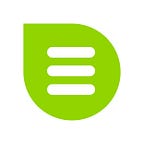You may have an idea of what lead nurturing is and why it’s important, but do you know what lead nurturing content improves conversions? Read on to learn what works at each stage of the buyer’s journey and how you can automate lead nurturing content to nurture leads on auto-pilot.
Content Planning for Lead Nurturing
Creating content for each phase of the buyer’s journey will help potential customers move through the process with confidence. This is your opportunity to re-purpose the content you have on hand and build it into your lead-nurturing strategy. Additionally, you can look for credible sources of supporting information, like review websites or social media reviews that speak proudly of your business.
According to Ardent Writers, 62% of buyers say the most important content they review in the buying process speaks specifically to their needs or pain points.
Sending hyper-relevant content to clients may require more initial groundwork, but the results speak for themselves. Here are some content types that you can use to get the most out of your leads at each stage of the sales funnel:
Content for the Awareness Phase
Prospects in the awareness phase have realized that they have a need or problem to be solved. As a business, you need to put yourself in the prospect’s shoes to understand the questions they’re likely to be asking themselves, so you can answer them with your content.
Content types that suit the awareness phase include:
- Blog posts that speak to general concerns that prospects have in this phase
- eBooks or videos that delve deeper into typical questions. These can be based on market research gathered from past customers.
Email marketing doesn’t have an impact in the awareness phase because you won’t usually know who these people are yet. So, the type of content you share on your website and via your social media channels must be valuable enough to draw them in. Once it’s persuaded potential clients to sign up for your email communications, you can start reaching out to them personally.
Content for the Consideration Phase
In this phase, prospects have identified their problem and have started researching ways to solve it. They may have read some of your content and even connected with you by signing up for email updates.
At this stage, they’ll be exploring the pros and cons of your products or services, pulling on all resources to assess whether you can help them meet their goals.
Content types that suit the consideration phase include:
- Webinars with a product or service focus
- Case studies into previous buying journeys
- Product reviews or demonstrations
- Datasheets
Content for the Decision Phase
The decision phase is the final stage where your prospects will use all the information available to them to decide if they want to buy into your product or service. If there are any lingering concerns about price, service delivery, etc., this is where it will come up. It’s also the perfect time to present prospective clients with personalized offers.
Content types that suit this phase include:
- A free trial of the product or service
- A personalized consultation to help set prospective clients’ minds at ease
- A live demonstration of what they can expect
- An estimate of costs related to the work required
- Client testimonials
Email Automation for Lead Nurturing
Lead nurturing emails are less promotional and more informative as if they come directly from a representative who’s personally dealing with their account. This gives clients the kind of free insight they can use to make better decisions, even without the full package that your business offers.
Giving away your intellectual property for free may seem counter-intuitive to securing new business, but it demonstrates that you’re a credible and trustworthy expert in your field. And one day when they do need a product / service that you offer, you’ll be the first company they think to call.
Automation allows you to trigger communications based on the behavior or demographics of your potential customers. This provides a foundation for engagement even when customers connect with you outside of work hours. It also removes the need for you to manually interact with every lead at each appropriate touchpoint.
For example, when someone signs up for a newsletter, automation allows you to send out a confirmation response email immediately. This kind of mail lets the prospective client know that their request has been received and they’ve been added to the mailing list. If, after a few days, they haven’t responded or taken action, you can send another automated mail that gives them further insight relating to what you can offer their business.
According to Venture Harbour, 48% of businesses say that their leads require “long cycle” nurturing with many influencers.
All of this can be set up according to the various stages of the journey and automated to send when a prospect reaches a certain point. This ensures that the right message is sent at the right time, giving you time to focus on other business initiatives while staying active in the prospect’s eyes.
When automating your lead-nurturing emails:
- Share content that’s valuable to the prospect’s needs, so you nurture your relationship with them.
- Educate prospects about your brand and its services or products. Make sure you pace yourself, so they don’t feel like you are hard selling to them.
- Personalize your workflows by segmenting the audience.
Final Words on Lead Nurturing
Creating content for each phase of the buyer’s journey helps potential customers move through the process effortlessly. Couple this with automation and you can nurture clients on autopilot; interacting with prospects easily and in real time.
A version of this article originally appeared on the Everlytic blog.
